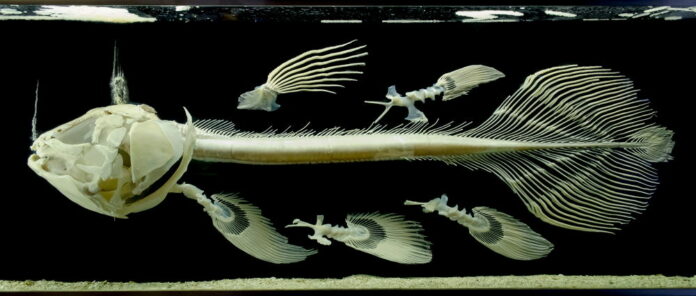
Jurassic Survivor: 60-million-Year-Old Fish Discovered in Pond
Credit: Shutterstock, Faviel_Raven
The coelacanth is an oddly-named lobe-fish that was thought to be extinct for more than 60 million years until it was rediscovered, splashing around in a small African pond.
The coelacanths appeared for the first time in the Early Devonian, more than 400 million years ago. Remarkably, these ancient fish have survived virtually unchanged to the present day, making them living fossils that offer invaluable insights into the evolution of vertebrates.
What zoologists didn’t know was that this ancient fish could still be found in our oceans today. Scientists thought the coelacanth had gone extinct around 70-65 million years ago, at the end of the Cretaceous period, until the night of Christmas Eve 1938, when the elusive nocturnal hunter was caught in a shark gill net off the mouth of the Chalumna River on the east coast of South Africa.
Almost 80 years ago, a 32-year-old museum employee, Ms. Marjorie Courtenay-Latimer, working in the small South African town of East London, received a strange fish she did not recognise. The rest, as they say, is history.
Courtenay-Latimer did not know the fish and had it taxidermied before consulting a university professor, James Leonard Brierley Smith, who was familiar with marine life. In the telegram back in the 1950s, when Brierley Smith received Latimer’s story of an unidentified fish by mail from the post office, he replied: “MOST IMPORTANT PRESERVE SKELETON AND GILLS = FISH DESCRIBED.”
When Brierley Smith landed in East London, he discovered that the fish was indeed an ancient coelacanth. News of the discovery almost turned zoology on its head, bringing Brierley Smith and Courtenay-Latimer instant fame within scientific circles.
Coelacanths are so elusive that a second specimen was not found for another 15 years. The second coelacanth was finally found in 1952 when two fishermen from the Comoro Islands, an archipelago between Madagascar and mainland Africa, brought another specimen to scientist James Leonard Brierley Smith.
More recently, a second species of coelacanth was also discovered in the Indonesian Islands around the 1990s.
How the Coelacanth Secretly Survived for Millions of Years.
Adaptations
Their lobed pectoral fins, believed to be evolutionary precursors to the limbs of land vertebrates, are perfect for moving deep into underwater terrain.
Stable environment
Coelacanths live in deep water, stable environments, underwater caves, and deep seas, where not much changes geologically. There are fewer predators and competition in these environments, perhaps offering the coelacanths sanctuary from some of evolution’s biggest pressures.
Low metabolism
Coelacanths have a low metabolic rate, enabling them to survive in nutrient-poor environments. Their slow metabolism is one of the main reasons they can live in a fluctuating environment. It allows them to survive and thrive for long periods of time with very little food.
Do you love nature? Read this: Giant Spiders Invade UK


